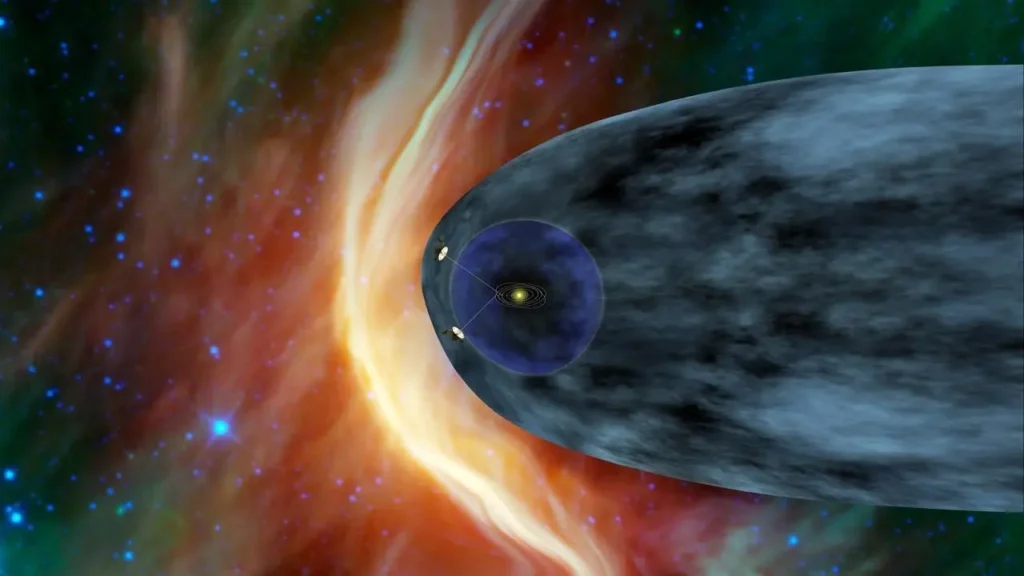
In a marvel of space exploration, NASA’s Voyager 1 spacecraft has detected an extraordinary boundary at the fringe of our solar system: a fleeting zone of superheated plasma—30,000 to 50,000 Kelvin—that scientists have aptly nicknamed a “wall of fire.” Yet, intriguingly, there’s no actual fire—just scorching particles in a vacuum so sparse that heat transfer is nearly nonexistent.
A Furnace at the Edge of Space
From nearly 24 billion kilometers away, Voyager 1 recorded this intense plasma region near the heliopause, the frontier where the solar wind collides with the interstellar medium. This discovery defies expectations: rather than a calm boundary, it’s a narrow, blazing frontier roughly 1 astronomical unit thick. The Economic Times+1
The evidence emerged not from Voyager 1’s original plasma detector—which had ceased functioning years ago—but from instruments detecting surges in cosmic rays and magnetic field distortions. The Economic Times+1
What Powers a Fire Without Flames?
There’s no combustion here: plasma reaches such high temperatures due to the collision and magnetic turbulence between supersonic solar wind and slower interstellar particles. These conditions amplify energy but, due to the extreme rarity of particles, generate heat without heating up Voyager 1 itself. The Economic Timesspaceandsky.com
Magnetic Surprises Beyond Our Solar Bubble
Another shocker: the magnetic field beyond the heliopause runs nearly parallel to the internal heliosphere’s field. This continuity challenges previous models that assumed a sharp magnetic disconnection at the solar boundary. The Economic Times+1
Why This Discovery Matters
- Redefining the Solar Boundary: The “wall of fire” turns the heliopause from a serene barrier into a turbulent frontier.
- Advancing Space Weather Science: Insight into magnetic behavior at our cosmic edge could enhance space weather models and safeguards for future interstellar missions.
- Looking Ahead: The upcoming IMAP mission (launching in 2026) will study this region with modern instruments, while a proposed interstellar probe might one day map this zone in unprecedented detail. The Economic Times
Why Voyager Isn’t Melting
Despite the astronomical temperatures, Voyager 1 remains unscathed—thanks to the minuscule particle density. In the void of space, high-temperature readings don’t translate to high heat: it’s like being in a blast furnace with almost no matter to transfer energy. Reddit+1
A user on Reddit aptly explains:
“Space is very empty so what few particles remain can move very far very fast, which implies a high temperature. But because the density is so low, the heat capacity… is very very low as well and so very little heat is actually there that can be transferred to anything that enters it.” Reddit
Voyager: Still Sending Data After All These Years
Even after nearly 50 years in space, Voyager 1 continues to relay valuable data—albeit at a snail’s pace of just 160 bits per second, with each message taking over 22 hours to reach Earth. The Economic Times+1
Careful power management, including shutting down non-essential instruments, has kept the probe operational as long as possible. NASA ScienceThe Economic Times
Thanks
Sidharth
IIM Jammu







Leave a Reply